Education
How Khan Academy plans to safeguard education’s future

When Sal Khan first launched Khan Academy in 2008, it was little more than a collection of YouTube math tutorials recorded for his cousins. Today, it’s a global nonprofit serving over 150 million registered users across 190 countries. Now, with artificial intelligence rewriting the rules of technology, Khan Academy’s founder and CEO believes AI could become the most powerful educational tool of our time, if it’s handled with care.
✅ Thank you for completing the survey!
That belief was at the center of a wide-ranging conversation on The Verge’s Decoder podcast, where Sal Khan talked about the risks, opportunities, and future of AI in classrooms.
Also read: GenAI effect: US college students are questioning value of higher education due to AI
AI tutors in the classroom
Khan Academy has long stood at the intersection of technology and learning. During the COVID-19 pandemic, it became a lifeline for millions of students and teacher
s suddenly thrust into remote learning. That moment, Khan recalls, showed the organization both the promise and the limits of digital education.
The next frontier is Khanmigo, an AI-powered tutor built on large language models. Designed to act less like a search engine and more like a thoughtful guide, Khanmigo can walk students through math problems step by step, role-play historical figures, and even help teachers draft lesson plans.
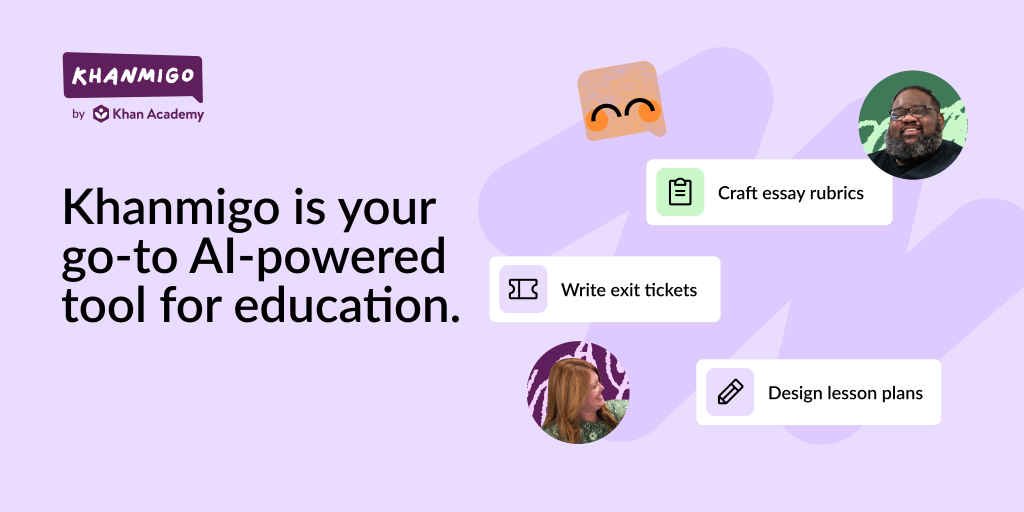
But Khan is adamant: “The goal isn’t to replace teachers, it’s to empower them,” he told Decoder. The AI is meant to supplement human instruction, not supplant it.
Building trust in AI-powered education
For all its potential, AI in education comes with serious concerns: privacy, bias, reliability, and the risk of over-dependence. Khan is acutely aware that without trust, even the best tools will fail.
Also read: Study mode in ChatGPT explained: How students can use AI more effectively
That’s why Khan Academy has focused on transparency and ethical design. Student data isn’t sold or used for advertising. The AI is tested rigorously to avoid giving harmful or misleading responses. And unlike many consumer AI apps, Khanmigo is deliberately constrained, it won’t solve a math problem outright, but will instead guide a student through the logic behind it.
“Trust is the currency of education,” Khan said on Decoder. “If we lose that, nothing else matters.”
How AI could democratize tutoring worldwide
Khan’s optimism stems from a belief that AI can finally tackle one of education’s oldest inequities: the lack of one-on-one tutoring. For centuries, individualized instruction has been available only to the wealthy. If AI can provide high-quality tutoring at scale, it could narrow achievement gaps worldwide.
The challenge is making that promise real. Khan Academy has partnered with schools, states, and districts to test Khanmigo in classrooms, ensuring the tool is accessible to underserved students and not just a perk for those who can pay.
“We see AI as a way to lift everyone,” Khan explained. “It can’t just be a luxury.”
As AI technology advances, so do the ethical dilemmas. Some educators fear that AI tools could deskill teachers, reduce human interaction, or worsen digital divides between well-resourced and underfunded schools.
What’s next for AI education
Khan Academy’s strategy is to move deliberately – scaling slowly, working with schools, and putting educators at the center of the process. The organization is committed to testing Khanmigo in real-world classrooms, refining its safety features, and ensuring that it helps teachers rather than replacing them.
Looking ahead, Khan believes that AI could transform education for the better, provided it’s rolled out responsibly. With guardrails in place, AI tutors could personalize learning for every student, lighten the load for teachers, and make quality education more accessible globally.
“Technology can either erode trust or deepen it,” Khan said on Decoder. “Our job is to make sure it’s the latter.”
For Khan Academy, the mission is clear: build tools that scale the human touch, not erase it. And in doing so, safeguard the future of education at a moment when trust in AI has never been more important.
Also read: Google’s Guided Learning versus ChatGPT’s Study Mode: Which is better?
Education
Universities around the world cut ties with Israeli academia over Gaza war | Israel

A growing number of universities, academic institutions and scholarly bodies around the world are cutting links with Israeli academia amid claims that it is complicit in the Israeli government’s actions towards Palestinians.
According to Gaza’s health ministry, more than 63,000 people have been killed in the territory – the majority of them civilians – with the true toll likely far higher. UN-backed experts have confirmed parts of Gaza, much of which has been reduced to rubble, are now in a “man-made” famine.
In response, a growing number of academic bodies are now distancing themselves from Israeli institutions. Last year the Federal University of Ceará in Brazil cancelled an innovation summit with an Israeli university, while a host of universities across Norway, Belgium and Spain have cut ties with Israeli institutions. Others, including Trinity College Dublin, followed suit this summer.
The University of Amsterdam has ended a student exchange programme with the Hebrew University of Jerusalem, and the European Association of Social Anthropologists has declared it will not collaborate with Israeli academic institutions and has encouraged its members to follow suit.
While not all those taking action support a general academic boycott, the movement reflects concerns over links within Israel between academia, the military and the government.
Stephanie Adam of the Palestinian Campaign for the Academic and Cultural Boycott of Israel said Israeli academic institutions are complicit in “Israel’s decades-long regime of military occupation, settler colonial apartheid and now genocide”, adding there is “a moral and legal obligation for universities to end ties with complicit Israeli universities”.
However, few institutions in the UK, France and Germany have announced they are cutting links Israeli academia, with Universities UK (UUK) saying it does not support an academic boycott.
“As a representative body, Universities UK has a longstanding public position of being committed to the free exchange of ideas, regardless of nationality or location. As such we do not endorse blanket academic boycotts, as this would represent an infringement of academic freedom,” a UUK spokesperson said. Likewise, the Royal Society has stated that it opposes academic boycotts.
The Nobel laureate and former president of the Royal Society Venki Ramakrishnan told the Guardian he has mixed feelings about boycotts.
“On the one hand, the Israeli government’s approach to Gaza has been hugely disproportionate, harming civilians, including young children, in the thousands,” he said.
“On the other hand, most Israeli academics I know, including several I count as my friends, detest Netanyahu and his government. A boycott of this would penalise those who are not responsible for the actions of the Israeli government, and who in fact are very sympathetic to the plight of Palestinians.”
The Israeli historian and political scientist Ilan Pappé disputed that many academics are sympathetic to the plight of the Palestinians. “If it were so, I would have seen them among the few hundreds [of] brave Israelis who demonstrate against the war because it is a genocide, not because it fails to bring back the hostages (demonstrations that [are] regarded [as] illegal in Israel),” he said, adding that the vast majority of Israeli academics do not refuse to serve in the country’s army.
“They provide courses and degrees to the secret service, police and are agencies of the government that are oppressing daily the Palestinians,” he said.
On the academic boycott, Pappé said: “[It] is a very harsh and tough, albeit necessary, conversation with the Israeli academic institutions, illuminating for them their responsibility and for being an organic part of an oppressive system. A reality that has been going on for 77 years and the Israeli academia is now told that there is price tag attached to such a conduct.”
Ghassan Soleiman Abu-Sittah, a British-Palestinian surgeon and rector of the University of Glasgow, said that students and academics across the UK have pushed for academic boycotts of Israel, but are being blocked by the governing bodies of universities.
As a result, he said, researchers are taking unofficial action.
“The moral outrage about what the Israelis are doing is leading more and more academics to take personal decisions, not to have joint projects with Israelis,” he said.
Whether the severing of academic ties has had any impact on researchers in Israel, or the Netanyahu government, is a matter of debate, with some sources within Israeli academia stating it is not affecting their research or links with longstanding collaborators.
However, that could change should the movement continue to spread, with experts noting the importance of collaborations between Israeli institutions and both Ivy League and western European universities.
What’s more, blocks on research funding could be very problematic, both for Israeli universities and the country as a whole, given the Israeli economy is heavily based on science and technology.
Such fears are very real: since 2021 Israel has received a net sum of €875.9m (£740.4m) from the EU’s Horizon Europe programme for scientific research. However, in July the European Commission proposed partially suspending Israel from Horizon Europe.
“The proposal will affect Israeli entities participating in the EIC Accelerator, targeting startups and SMEs [small and medium enterprises] with disruptive innovations and emerging technologies that have a potential dual use, for example in cybersecurity, drones, and artificial intelligence,” said the EU Commission spokesperson Thomas Regnier.
At present, the suspension looks unlikely, with 10 member states arguing it is better to keep a dialogue open with Israel. But concerns remain that Israel could be blocked from the successor to Horizon Europe, which is set to begin in 2028.
Adam said there are signs academic actions are cutting through, noting in May 2024 the Israeli government allocated €22m (£19m) specifically to combat the Palestinian-led academic boycott, while Israel’s share of EU research funding has fallen.
Last Thursday it was revealed that of the 478 early-career researchers selected by the European Research Council to receive its 2025 starting grants as part of the Horizon Europe programme, just 10 are in Israel, compared with 30 of 494 grantees the year before.
Should the money stop flowing and prestigious collaborations dry up, there is also concern that researchers will leave Israel, potentially never to return, fuelling a “brain drain” that is already a concern in medicine.
While Israeli researchers told the Guardian academia is the wrong target for boycotts, and some experts say on its own an academic boycott will not be effective, others maintain the approach is a powerful tool.
“The threat of academic boycott is sufficient to push the Israeli government into ending this genocide,” said Abu-Sittah.
Education
Online misinformation putting women off contraceptive pill, study finds | Health

Social media misinformation about the contraceptive pill is encouraging women to view it so negatively that many give it up, a study has found.
Researchers have identified myths spread on TikTok and other social media platforms as a key driver of users suffering side-effects that are real but psychological in origin. It is called the “nocebo effect”, the opposite of the better-known placebo effect.
Experiencing it is closely linked to anxiety, depression and fatigue, with experts saying people become “wary of anything that they believe might make [the conditions] worse”. This, in turn, spurs on the effect.
It has been seen with other medicines, but the study, by psychologists at Sheffield University, is the first to link the syndrome with use of the pill, which has fallen sharply.
The pill remains the most popular form of contraception in England, but the proportion of women who access NHS sexual health services and use the pill as their form of birth control fell from 39% in 2020-21 to 28% in 2023-24.
Sexual health experts believe the decline in uptake, and the fact that two-thirds of women who use it stop doing so within two years, is a major reason why the number of abortions in England and Wales has risen sharply in recent years and hit an all-time high of 251,377 in 2022 – 17% up on the previous year.
NHS bosses are worried about the role of influencers on TikTok and YouTube, who have posted content that warns women against using the pill and advocate using “natural” birth control instead.
For example, one has claimed that the pill “robs us of our health” because of “common” side-effects including an alleged heightened risk of thyroid problems, blood clots and strokes.
Dr Rebecca Webster and Lorna Reid, the co-authors of the study, found that the “nocebo effect” involved four psychological factors that were associated with women having a negative experience of the pill. They were:
-
An expectation at the outset that the pill will be harmful.
-
Low confidence in how medicines are developed.
-
A belief that medicines are overused and harmful.
-
A belief that they are sensitive to medicines.
“The evidence suggests that many of the commonly reported side-effects of hormonal contraception are a result of psychological, or nocebo, response to the act of taking oral contraceptives,” Webster said.
“Despite these being psychological in origin, it’s important to understand that these are very real experiences for women, often affecting their decision to continue taking the pill.”
The authors wrote: “Medicine-related beliefs were associated with increased experience of oral contraceptive side-effects, demonstrating the potential role that nocebo-related factors may have in impacting oral contraceptive side-effect experience.”
Their findings were based on a study of 275 women aged 18-45 who had used the pill over the previous 18 months. Almost all – 266 (97%) – experienced at least one side-effect while doing so.
They found that women’s expectations that they would have a negative experience of the pill from the outset often proved self-fulfilling. But negative messaging about the pill in the media and a belief that medicines are harmful or over-used raised the risk of them reacting badly to it.
“I think since Covid there’s the anti-facts, anti-big pharma rhetoric coming out on social media. I think that’s had an effect”, said Dr Janet Barter, the president of the College of Sexual and Reproductive Healthcare, which represents sexual health specialists.
“But I think also we know that a lot of young people are suffering with their mental health, with either depression or particularly anxiety. So they’re likely to be very wary of anything that they believe might make that worse.”
Brook, a large sexual health services provider, also blamed online misinformation for helping to create the “nocebo effect” the researchers identified.
“Young people in particular are influenced by what they see and hear about contraception. People in our clinics are increasingly expressing concern about hormonal contraception due to things they have heard on social media”, said Laua Domegan, Brook’s head of nursing.
“Common myths include that the pill will make you gain weight, will impact your long-term fertility or even affect the kinds of people you are attracted to.”
Misinformation about the pill was gaining traction because health professionals did not give women enough information about contraception and also because schools did not include enough about it in sex and relationships classes, she added. More “honest conversations” were needed, she said.
However, Webster and Reid argue in their paper, published in Perspectives on Sexual and Reproductive Health, that because many women’s bad reactions to the pill are psychological in origin, that “psychological interventions” – such as challenging negative beliefs about medication – could be used to cut side-effects and keep them using the pill.
Education
Colleges add sports to bring men, but it doesn’t always work
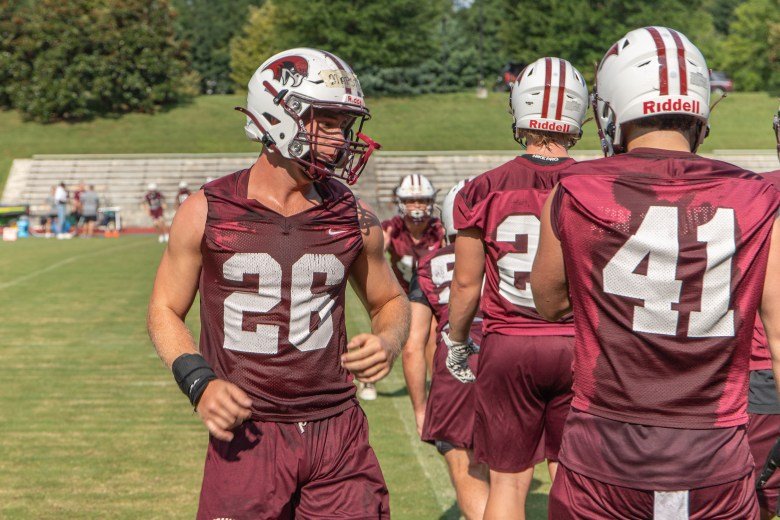
SALEM, Va. — On a hot and humid August morning in this southwestern Virginia town, football training camp is in full swing at Roanoke College. Players cheer as a receiver makes a leaping one-handed catch, and linemen sweat through blocking drills. Practice hums along like a well-oiled machine — yet this is the first day this team has practiced, ever.
In fact, it’s the first day of practice for a Roanoke College varsity football team since 1942, when the college dropped football in the midst of World War II.
Roanoke is one of about a dozen schools that have added football programs in the last two years, with several more set to do so in 2026. They hope that having a team will increase enrollment, especially of men, whose ranks in college have been falling. Yet research consistently finds that while enrollment may spike initially, adding football does not produce long-term enrollment gains, or if it does, it is only for a few years.
Roanoke’s president, Frank Shushok Jr., nonetheless believes that bringing back football – and the various spirit-raising activities that go with it — will attract more students, especially men. The small liberal arts college lost nearly 300 students between 2019 and 2022, and things were likely to get worse; the country’s population of 18-year-olds is about to decline and colleges everywhere are competing for students from a smaller pool.
“Do I think adding sports strategically is helping the college maintain its enrollment base? It absolutely has for us,” said Shushok. “And it has in a time when men in particular aren’t going to college.”
Women outnumber men by about 60 percent to 40 percent at four-year colleges nationwide. Roanoke is a part of this trend. In 2019, the college had 1,125 women students and 817 men.
This fall, Roanoke will have 1,738 students altogether, about half men and half women. But the incoming freshman class is more than 55 percent male.
“The goal was that football would, in a couple of years, bring in at least an additional hundred students to the college,” said Curtis Campbell, Roanoke’s athletic director, as he observed the first day of practice. “We’ve got 97 kids out there on the field. So we’re already at the goal.”
That number was 91 players as the season began, on Sept. 6 — and the Maroons won their first game, 23-7, over Virginia University of Lynchburg, on what Shushok called “a brilliant day full of community spirit and pride.”
“Our students were out in force, side by side with community members spanning the generations,” he said via email. “In a time when we all need more to celebrate and opportunities to gather, it is easy to say our first football game since 1942 was both historic and invigorating.”
Related: Interested in more news about colleges and universities? Subscribe to our free biweekly higher education newsletter.
In the NCAA’s Division III, where Roanoke teams compete, athletic scholarships are not permitted. Athletes pay tuition or receive financial aid in the same way as other students, so adding football players will add revenue. For a small college, this can be significant.
Shushok said it’s not just about enrollment, though: He wants a livelier campus with more school spirit. Along with football, he started a marching band and a competitive cheerleading team.
“It plays to something that’s really important to 18- to 22-year-olds right now, which is a sense of belonging and spirit and excitement,” said Shushok, who came to Roanoke after being vice president of student affairs at Virginia Tech. Its Division I football team plays in a 65,000-seat stadium where fans jump up and down in unison to Metallica’s “Enter Sandman” as the players take the field.
The Maroons play in the local high school stadium — it seats 7,157 — and pay the city of Salem $2,850 per game in rent. The college raised $1.3 million from alumni and corporate sponsors to get the team up and running.
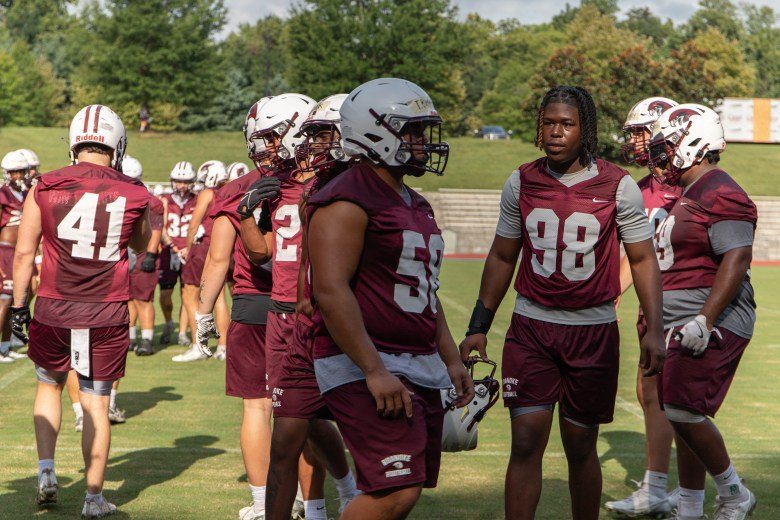
Despite the research showing limited enrollment gains from adding football, colleges keep doing it. About a dozen have added or relaunched football programs in the last two years, including New England College in New Hampshire and the University of Texas Rio Grande Valley. Several more plan to add football in 2026, including Chicago State University and Azusa Pacific University in California.
Related: Universities and colleges search for ways to reverse the decline in the ranks of male students
Calvin University in Michigan recently added football even though the student body was already half men, half women. The school wanted to broaden its overall appeal, Calvin Provost Noah Toly said, citing “school spirit, tradition, leadership development,” as well as the increased enrollment and “strengthened pipelines with feeder schools.”
A 2024 University of Georgia study examined the effects of adding football on a school’s enrollment.
“What you see is basically a one-year spike in male enrollment around guys who come to that school to help be part of starting up a team, but then that effect fades out over the next couple of years,” said Welch Suggs, an associate professor there and the lead author of that study. It found early modest enrollment spikes at colleges that added football compared to peers that didn’t and “statistically indistinguishable” differences after the first two years.
”What happens is that you have a substitution effect going on,” Suggs said. “There’s a population of students that really want to go to a football school; the football culture and everything with it really attracts some students. And there are others who really do not care one way or the other. And so I think what happens is that you are simply recruiting from different pools.”
Today, college leaders value any pool that includes men. Most prefer the campus population to be balanced between the sexes, and, considering the low number of male high school graduates going to college at all (39 percent in the last Pew survey), many worry about too few men being prepared for the future workforce.
“ I don’t know that we have done a good job of articulating the value, and of programming to the particular needs that some of our young men are bringing in this moment,” Shushok said. “I think it’s pretty obvious, if you read the literature out there, that a lot of men are feeling undervalued and perhaps unseen in our culture.”
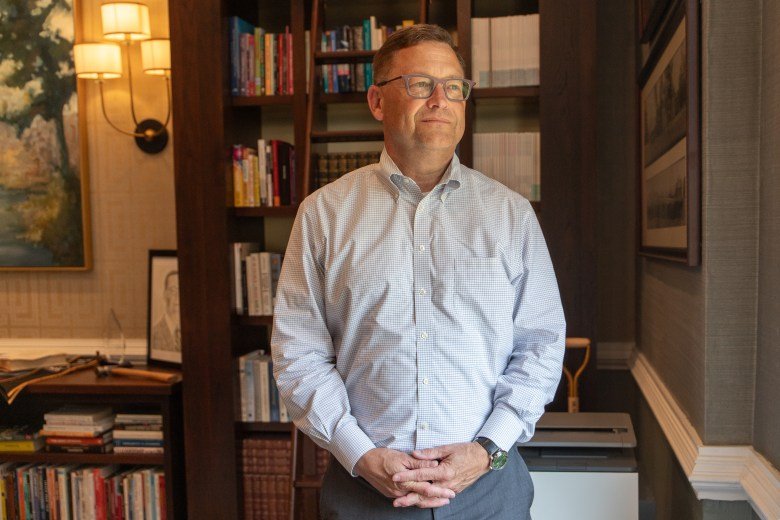
Shushok said that Roanoke’s enrollment-building strategy was not centered on athletics. The college has also forged partnerships with local community colleges, guaranteeing students admission after they complete their associate degree, and has added nine new majors in 2024, including cannabis studies. Shushok pointed out that while freshman enrollment is down slightly this year, the community college program has produced a big increase in transfer students, from 65 in fall of 2024 to 91 this fall.
About 55 percent of Roanoke’s students come from Virginia, but 75 of the football team’s 91 players are Virginians. The head coach, Bryan Stinespring, a 61-year-old Virginia native, knows that recruiting territory, having worked on the coaching staffs at several Virginia universities in his career.
Related: College Uncovered podcast: The Missing Men
When Stinespring took over as head coach in 2023, hoping to inspire existing students and potential applicants to join his new team, there was no locker room, no shoulder pads or tackling dummies, no uniforms.
“The first set of recruits that came on campus, we ran down to Dick’s, got a football, went to the bookstore, got a sweatshirt,” said Stinespring, referring to a local Dick’s Sporting Goods store. “These kids came on campus and they had to believe in the vision that we had.”
Students bought into that vision; 61 of them joined a club team last fall, which played four exhibition games in preparation for this year. The community bought in, too; 9,200 fans showed up to the first club game, about 2,000 of them perched on a grassy hill overlooking the end zone.
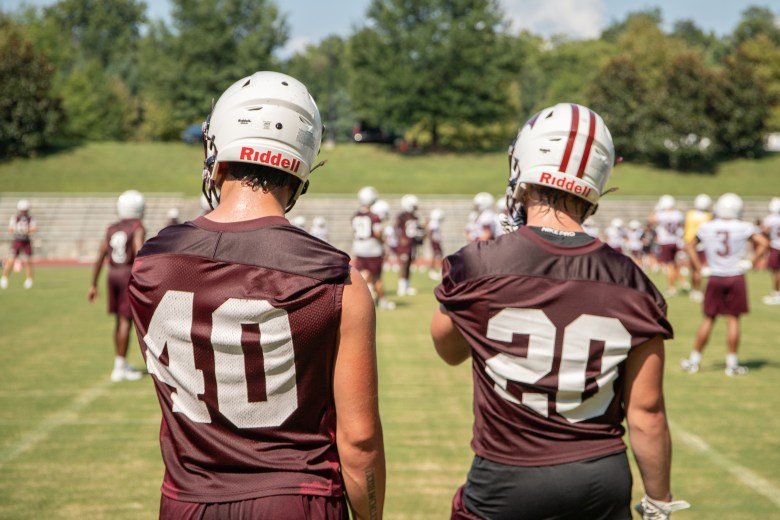
Before Ethan Mapstone, a sophomore, committed to Roanoke, he was on the verge of giving up football, having sustained several injuries in high school. Then Stinespring called.
“I could hear by the tone of his voice how serious he meant everything he was saying,” said Mapstone, a 6-foot-1-inch linebacker from Virginia Beach. “I was on a visit a week later, committed two weeks later.”
To him, the football leaders at Roanoke seemed to be “a bunch of people on a mission ready to make something happen, and I think that’s what drove me in.”
Related: Even as women outpace men in graduating from college their earnings remain stuck
KJ Bratton, a junior wide receiver and transfer student from the University of Virginia, said he was drawn to Roanoke not because of football but because of the focus on individual attention in small classes. “You definitely get that one-on-one attention with your teacher, that definitely helps you in the long run,” said Bratton.
Jaden Davis, a sophomore wide receiver who was an honor roll student in high school, said, “ The staff, they care about all the students. They’ll pull you aside, they know you personally, they’ll send you emails, invite you to office hours, and they just work with you to do the best you can.”
Not everyone was on board with football returning to the college when the plan was first announced. Some faculty and administrators were concerned football would change the campus culture, said Campbell, the athletic director.
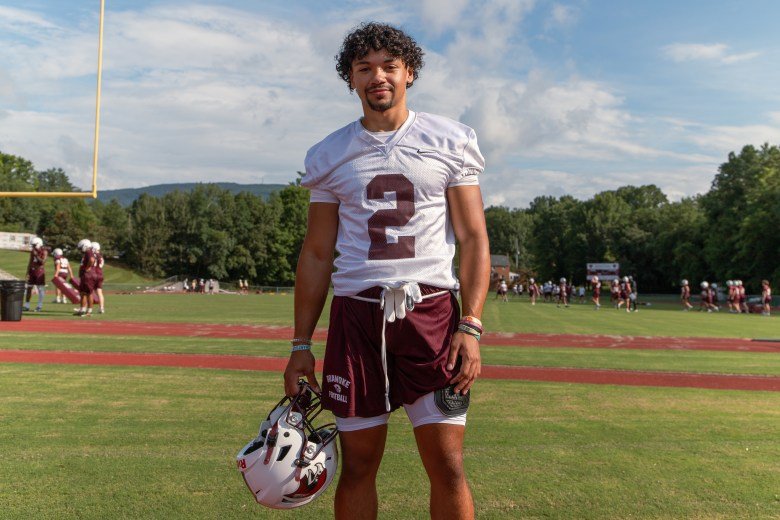
“There were just stereotypes about football players,” he said. “You know, they’re not smart, they’re troublemakers. They’re gonna do this and they’re gonna do that, be disruptive.”
But the stereotypes turned out to be unwarranted, he said. When the club team started, he said, “I got so many compliments last year from faculty and staff and campus security about how respectful and polite and nice our students were, how they behaved in the classroom, sitting in the front row and just being role models.”
Payton Rigney, a junior who helps out with the football team, concurred. “All the professors like them because they say ‘yes, sir’ and ‘no, ma’am,’” she said.
Like most Division III athletes, the Roanoke players know that they have little chance of making football a professional career. Mapstone said there are other reasons to embrace the sport.
“It’s a great blessing to be able to do what we do,” he said. “There’s many people that I speak to who are older and, and they reminisce about the times that they had to play football, and it’s very limited time.
“And even though there’s not a future for it, I love it. It’s a Thursday, my only problem in the world is that there’s dew on my shoes.”
Contact editor Lawrie Mifflin at (212) 678-4078 or mifflin@hechingerreport.org.
This story about college football was produced by The Hechinger Report, a nonprofit, independent news organization focused on inequality and innovation in education. Sign up for the Hechinger higher education newsletter.
-

 Business2 weeks ago
Business2 weeks agoThe Guardian view on Trump and the Fed: independence is no substitute for accountability | Editorial
-
Tools & Platforms1 month ago
Building Trust in Military AI Starts with Opening the Black Box – War on the Rocks
-

 Ethics & Policy2 months ago
Ethics & Policy2 months agoSDAIA Supports Saudi Arabia’s Leadership in Shaping Global AI Ethics, Policy, and Research – وكالة الأنباء السعودية
-

 Events & Conferences4 months ago
Events & Conferences4 months agoJourney to 1000 models: Scaling Instagram’s recommendation system
-

 Jobs & Careers2 months ago
Jobs & Careers2 months agoMumbai-based Perplexity Alternative Has 60k+ Users Without Funding
-

 Podcasts & Talks2 months ago
Podcasts & Talks2 months agoHappy 4th of July! 🎆 Made with Veo 3 in Gemini
-

 Education2 months ago
Education2 months agoVEX Robotics launches AI-powered classroom robotics system
-

 Education2 months ago
Education2 months agoMacron says UK and France have duty to tackle illegal migration ‘with humanity, solidarity and firmness’ – UK politics live | Politics
-

 Podcasts & Talks2 months ago
Podcasts & Talks2 months agoOpenAI 🤝 @teamganassi
-

 Funding & Business2 months ago
Funding & Business2 months agoKayak and Expedia race to build AI travel agents that turn social posts into itineraries



















